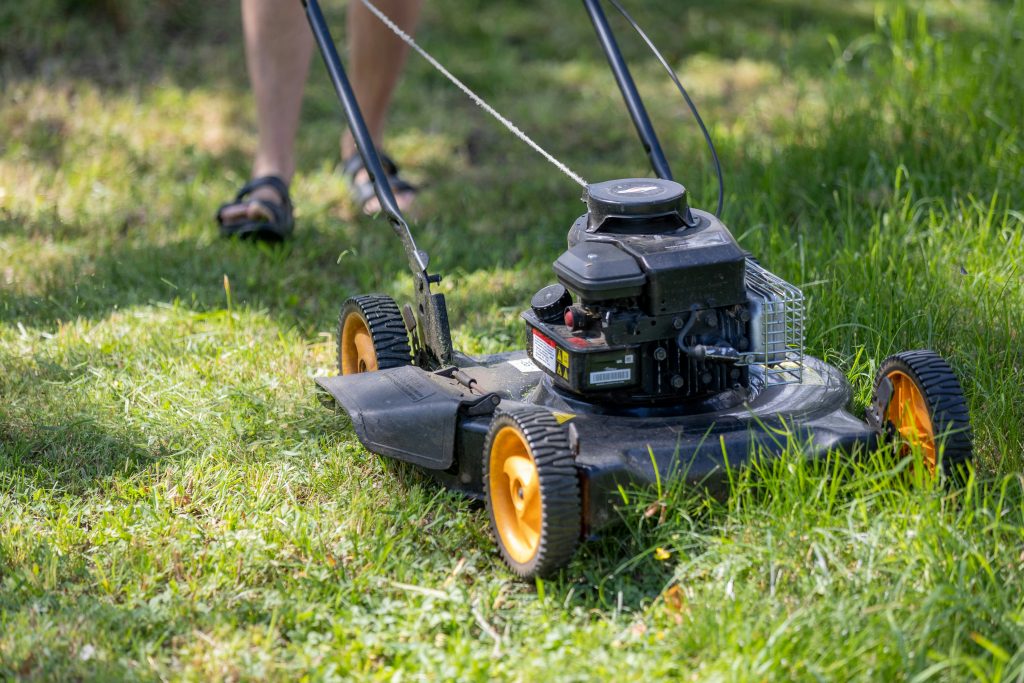Despite spring being well underway, gardening experts are still warning homeowners to leave their lawns – even though the grass may be getting long. Mowing wet grass has disastrous consequences not just for the health of lawns, but the machinery used to cut it.
According to data from MyBuilder.com, the reliable way to hire tradespeople, the wet weather has already been extremely damaging to British gardens. More than a third (38 per cent) of UK homeowners stated that they have been unable to use their gardens due to the weather – and close to a fifth (17 per cent) admitted that their lawn has been ruined by the level of rain.
February 2024 has been one of the wettest on record – but it was also one of the warmest, meaning that the grass has been growing despite the rain. Unfortunately, March continued the trend, and April has so far continued with warm and wet weather. With No Mow May just around the corner, some may make the decision to let your garden run wild until June – or at least be selective about areas to mow.
While your lawn may have started to look like a jungle, cutting it while wet can cause extensive damage to your grass and your machinery.
Problems caused by mowing of wet grass include:
-
Uneven cuts due to weight on the grass blade
-
Damage to grass blade health due to tearing
-
Vulnerability to fungal infections due to torn grass blades
-
Lawn mower damage due to clumps of grass blocking mower blades
-
Damage to yourself caused by slipping on wet ground or danger from electric mowers should damaged cords meet water
James Lewis, expert gardener from MyBuilder.com, said that while it may seem like cutting the lawn will improve the appearance of your garden, the opposite can be true.
“While regular cutting of your lawn is essential for its general health, mowing while wet is counter productive. When grass is wet, it doesn’t stand up straight and therefore it’s impossible to get an even cut. You will end up with a messy cut, or the mower may miss blades of grass entirely, leaving you with patches of totally unmown lawn. Worse still, these tears in the blade leave your lawn vulnerable to fungal infections, which thrives in wet conditions.
“We’d advise you to leave the lawnmower in the shed this weekend, and wait for the dryer weather to arrive before cutting your grass. But if you really can’t wait, there are a few methods to follow which lessen your chances of a problem.”
Tips to cut a wet lawn
Sharpen mower blades
Sharp blades increase your chances of getting a clean, even cut on your lawn. This is important at all times, but especially so when cutting wet grass.
Raise the mower deck
Set the cutting blades as high as possible. This will help to stop clogging of your blades, as well as minimising any damage to your grass plants.
Remove excess water
Before you start to mow, do your best to remove any water from your lawn. You can use a hosepipe to do this by dragging it across the lawn in a “squeejee” effect.
Clean up
Immediately clear up any clippings and move them off the lawn. Leaving the cut grass will decrease oxygen to the remaining plants. Be cautious with using a rake if the ground is saturated as it could pull up plants with the soil underneath.
Take it slow
Keeping your speed slow and consistent will minimise the load on your mower, therefore lowering the risk of damage to your machine.
Hose it down
Make sure your mower is thoroughly cleaned after use, removing any clogs of grass. Leave it to dry in a well ventilated area before putting it away.
Featured Photo by Carl Tronders on Unsplash.



